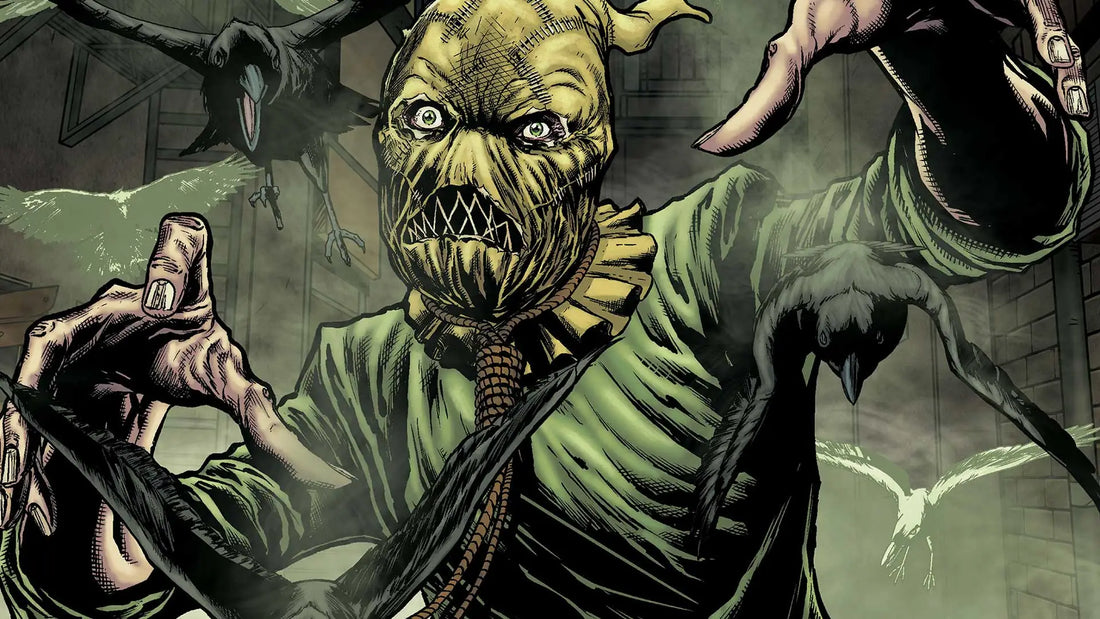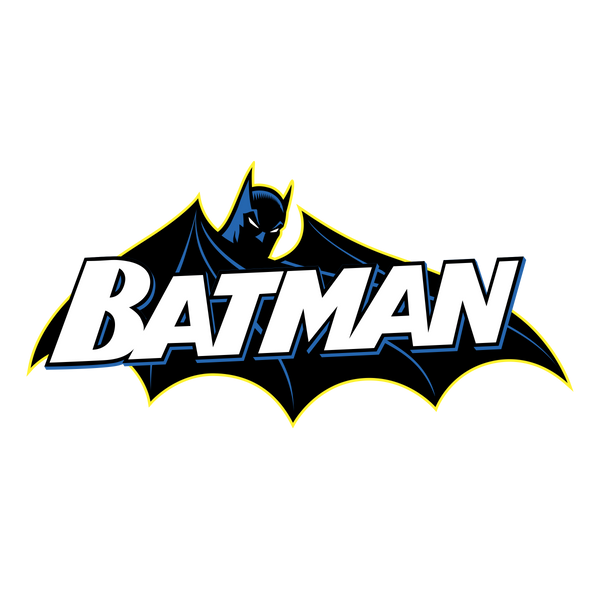
The Scarecrow: Master of fear and psychological enemy of Batman
In the Batman universe, few enemies strike more fear than the Scarecrow . Behind this terrifying moniker hides Jonathan Crane , a former psychology professor turned master of terror. Unlike brute brutes or criminal masterminds, the Scarecrow has only one goal: to plunge Gotham into pure fear . And to achieve this, he uses the most powerful weapon of the human mind: phobia.
From his earliest appearances in the comics, the Scarecrow has distinguished himself by a unique approach to crime: he doesn't steal or kill for financial gain —he wants to see his victims mentally broken. His passion for psychology, coupled with a profound contempt for society, has led him to develop a toxic gas capable of awakening everyone's worst nightmares. A formidable tool, he is one of the Dark Knight's most psychologically dangerous adversaries.
His costume, inspired by field scarecrows, reinforces this aura of anguish: masked, frightening, dressed in rags and often armed with syringes or gas diffusers, Crane embodies fear in its purest form . We find him as much in comics as in video games like Batman: Arkham Knight or the films of Christopher Nolan, where his emblematic figurine has become a cult object among fans.
🎭 Fan of the dark universe of Gotham? Our Batman masks will immerse you in the skin of both heroes and villains. And for a decorative touch inspired by darkness, also explore our gothic Batman paintings .
Fear gas: a terrifying invention
Scarecrow's most iconic weapon is undoubtedly his fear gas . This ultra-powerful chemical substance causes intense hallucinations, awakening its victims' deepest phobias . The goal? To plunge Gotham into a collective nightmare and demonstrate how fear can control the masses.
Every appearance of the Scarecrow in comics or video game adaptations is characterized by the strategic use of this toxin. In Batman: Arkham Asylum , for example, Crane orchestrates spectacular hallucinatory sequences , where even Batman loses his bearings.
Effects of fear gas may include:
- Intense visual hallucinations : visions of loved ones in danger or monsters from the worst nightmares
- Psychic paralysis : inability to act in the face of unreal fear that is felt to be genuine
- Irrational behaviors : aggression, panicked flight or dementia crisis
- Reality distortion : confusion between what is true and what is produced by the gas
For Batman, the Scarecrow therefore represents a major challenge: the enemy is not seeking to defeat him physically, but to break him down mentally . This places their confrontations on an almost philosophical level, where the Dark Knight's mental resilience is constantly put to the test.
🧠 If this cerebral aspect of Batman fascinates you, don't miss our article on his ultimate detective skills , where psychology takes center stage. And to fully experience it, explore our Batman costumes or even our Gotham-inspired pajamas for a complete immersion into your dreams... or nightmares.
A chilling aesthetic, the character's signature
What makes Scarecrow so significant in the Batman universe is his meticulous depiction of fear . Jonathan Crane doesn't just sow terror with his gases: he cultivates a frightening visual identity , inspired by the worst childhood nightmares. A crude burlap mask, a gangly silhouette, syringes at the tips of his fingers or fake medical instruments... every detail is designed to provoke immediate discomfort.
In many versions, the Scarecrow borrows from the codes of Gothic horror: a sort of living scarecrow, half-man, half-ghost, emerging from the darkness with a hollow voice. He embodies the contemporary bogeyman, the one we think we left behind when we grew up... but who returns to haunt the alleys of Gotham.
This aesthetic also makes the Scarecrow a favorite character in video games and related products. In the Arkham saga, especially Arkham Knight , he becomes the main antagonist with a terrifying design and distressing cinematic scenes. The player literally plunges into a world corrupted by fear, a reflection of Crane's psychological power.
📚 And if this visual side of Gotham intrigues you, don't miss our article on Arkham Asylum , the lair where the Scarecrow refined his most twisted experiments.
Crane and Batman: Two Sides of the Same Trauma
What makes the confrontation between Batman and the Scarecrow so powerful is that it is built on a deep psychological tension. Jonathan Crane and Bruce Wayne are both shaped by fear , but where Batman used it as a force for justice, Crane has transformed it into a weapon of domination. Their rivalry goes beyond mere physical violence: it's a war of minds, as each tries to prove their mastery of humanity's most primal emotion.
For Batman, confronting the Scarecrow often means confronting his own demons. His worst nightmares, his childhood wounds, his moral dilemmas… all of these are rekindled by Crane's toxins. But over the course of the stories, the Dark Knight learns to control these fears, to confront them head-on—whereas Crane only runs away from them and inflicts them on others.
This ambivalent relationship gives rise to some of the strongest story arcs in the DC Universe. In Batman Begins , the Scarecrow is one of Bruce's first major enemies, partnering with Ra's al Ghul in a plan for total destruction through terror. In Arkham Knight , he embodies the final escalation of fear as a method of governance.
🧠 Want to learn more about how Batman faces his fears and stays in control of himself? Don't miss our article "Why Doesn't Batman Kill?" , a deep dive into his inner philosophy when facing his most dangerous enemies.
🦇 And to explore all of his psychologically significant adversaries, visit our Batman movies page , which features the biggest threats facing Gotham.
